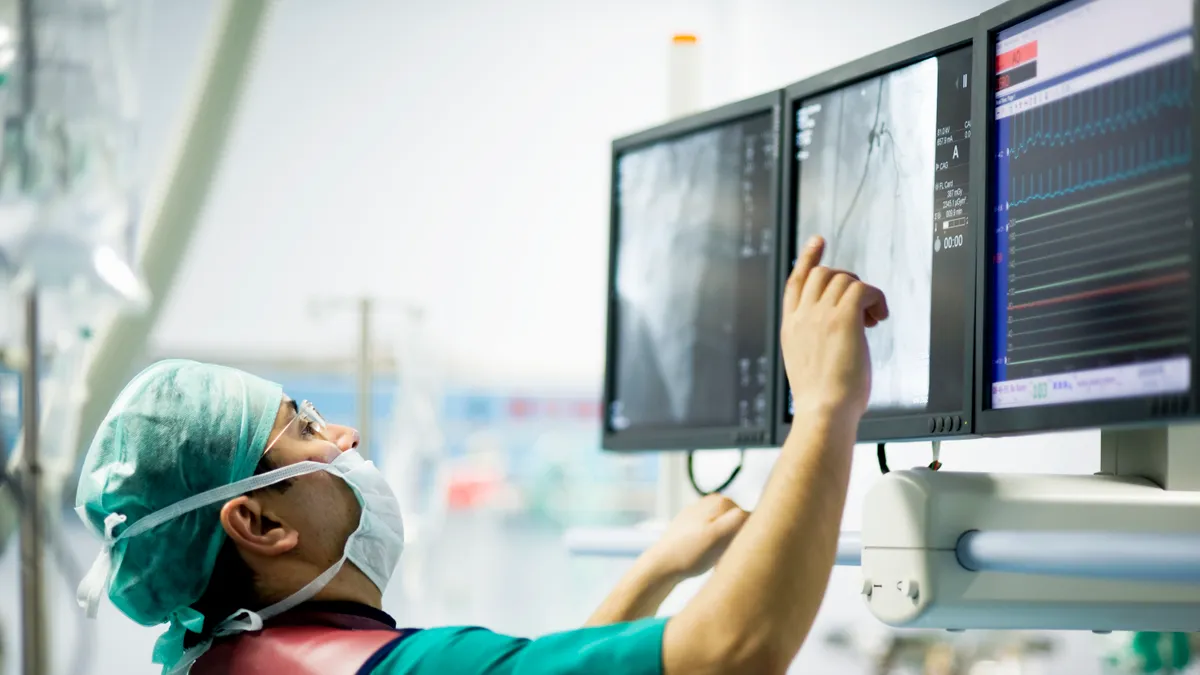For more than a year, the U.S. and China have been raising the stakes at a poker table, increasing tariffs and betting the other will fold. The healthcare world is one of many industries likely to suffer from higher duties.
In addition to equipment made with steel and aluminum, other vital products such as lasers, X-rays, electrosurgical instruments, microscopes, lasers, and parts of medical sterilizers and medical gloves, to name just a few, are affected.
"Our previous [June 2018] analysis found that President Trump's tariffs on China could increase the cost of medical equipment by $400 million nationwide,"Jacqueline Varas, Director of Trade and Immigration Policy at the American Action Forum (AAF), told Supply Chain Dive.
The June 2018 analysis took into account 10% tariffs on $200 billion worth of goods from China. She said the 25% tariffs will "place even more upward pressure"on the supply chains for medical equipment and ultimately consumers.
The latest proposed list of tariffs on $300 billion worth of Chinese imports excludes "select medical goods" but does include medical gloves made of vulcanized rubber other than hard rubber and a few categories of surgical drapes and towels.
Hospitals fight back
On Nov. 5, the American Hospital Association (AHA) sent a letter to Secretary of Commerce Wilbur Ross strongly opposing the tariffs and their detrimental impact on all communities, but especially vulnerable communities that can least afford higher costs. Hip and knee replacements become more common in older patients, and sophisticated medical equipment — pacemakers, defibrillators and the like — becomes more urgent.
"The recent tariffs are estimated to increase the cost of medical equipment and supplies typically purchased by hospitals and health systems by at least $160 million per year," Thomas P. Nickels, the AHA’s Executive Vice President, wrote in the November letter. AHA represents almost 5,000 hospitals, health systems and organizations, more than 270,000 physicians and 2 million nurses and caregivers.
"This amount does not include the additional costs due to tariffs that hospitals will incur during construction for steel or when acquiring major appliances, such as commercial washing machines and dryers," he continued. "The overall impact on hospitals and health systems is greater and will certainly lead to higher health care costs."
It’s a matter of image
Medical imaging equipment is often made of steel and aluminum. A few types affected by the tariffs include sterilizers, ultrasonic tanning devices, magnetic resonance imaging (MRI) equipment and optical instruments.
One organization that also expressed its dissatisfaction with the tariffs is the Medical Imaging & Technology Alliance (MITA). It conducted a survey of its membership — including such major players as Cardinal Health, GE Healthcare, Bayer, Lilly, Hitachi, Medtronic, Phillips and Samsung, whose sales comprise more than 90% of the global market for advanced medical imaging technology.
"The primary impact is that it will make it more expensive to produce products in the U.S."

Jacqueline Varas
Director of Trade and Immigration Policy, American Action Forum
"Of those that responded and that are affected by the tariffs, 100% of medical imaging manufacturers said they would invest fewer resources in research and development and 100% said they would reduce workforce if the tariffs were put into effect,"MITA Executive Director Patrick Hope wrote in a letter to U.S. Trade Representative Robert Lighthizer last May before tariffs were implemented.
One survey responder said a new tariff would "require [it] to lay off employees and also significantly raise the cost of healthcare as manufacturers will have to either cut R&D or pass on the 25% increase to the end users (healthcare providers)."
MITA offered three main concerns in its letter to Lighthizer:
- The tariff serves as a double tax on U.S. manufacturers. "It is quite common that products will be imported from a manufacturer in China to their manufacturing facility in the U.S., where they are substantially transformed by and re-exported — often to China," Hope wrote. "Taxing these products on both ends of the supply chain [is] a disincentive to manufacture in the U.S."
- Medical imaging devices should be exempt from trade sanctions for humanitarian reasons. "Medical devices are integral to global public health and disrupting the trade flows and adding [the] cost of these products should be avoided in an effort not to impede patient access to health care."
- Tariffs on medical imaging devices will not achieve the desired outcome. "While we realize that high-end medical technology products are included in China’s initiative, the market access barriers our industry faces in China are not related to tariffs, but instead largely to procurement and investment restrictions. Raising tariffs on imports from China will not lead to reciprocal treatment in those areas where we believe it is lacking and will instead add an additional burden for U.S. manufacturers."
The chips on the table continue to pile up as the U.S. has proposed yet another round of tariffs and negotiations carry on.
"The primary impact is that it will make it more expensive to produce products in the U.S.," Varas said. "That’s opposite of the stated goals of the administration. It will hurt the consumer — particularly low income, and it will primarily impact the uninsured. Costs will go up. It’s not like we can manufacture tomorrow what we don’t have today. Even if we could, the cost of manufacturing in the United States is higher. That’s the value of international trade."














